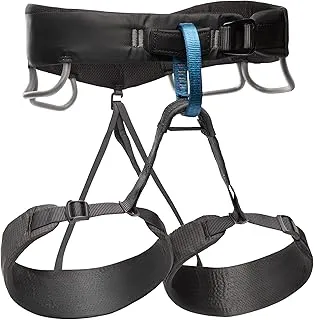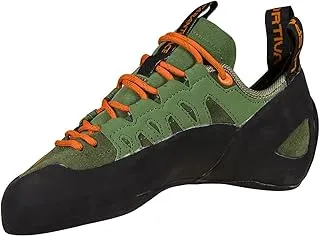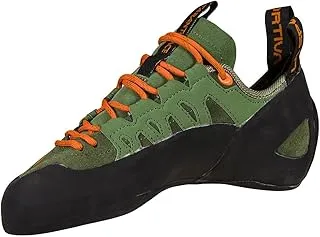I've spent countless hours exploring Maine's spectacular climbing destinations, and Acadia National Park climbing offers some of the most unique and breathtaking experiences on the East Coast. From the dramatic sea cliffs of Otter Cliff to the challenging multi-pitch routes at The Precipice, this comprehensive guide covers everything you need to know about climbing in America's premier coastal climbing destination. Whether you're a beginner looking for your first outdoor climbing experience or an experienced climber seeking new challenges, Acadia's diverse terrain and stunning ocean views provide unforgettable adventures for every skill level.
Why Acadia National Park Climbing is Legendary
When I first experienced Acadia National Park climbing, I was immediately struck by the unique combination of solid pink granite, spectacular ocean views, and the sound of waves crashing below. Unlike traditional mountain climbing destinations, Acadia offers something truly special: the opportunity to climb directly above the Atlantic Ocean on some of the finest granite on the East Coast.
The park's climbing areas are renowned for their featured granite with excellent crack systems, natural holds, and horizontal ledges that make Acadia National Park climbing particularly beginner-friendly while still offering challenges for advanced climbers. I've guided climbers of all levels here, and the quality of the rock consistently impresses even seasoned veterans from places like Yosemite and the Gunks.

What Makes Acadia Climbing Unique
- Sea Cliff Environment: Most routes require rappel access, creating a unique climbing experience directly above the ocean
- High-Quality Granite: The coarse-grained pink granite provides excellent friction and natural protection placement
- Uncrowded Routes: Unlike other popular climbing destinations, you'll often have entire cliffs to yourself
- Wildlife Encounters: During my climbs, I've regularly spotted harbor seals, porpoises, and various seabirds
- All-Level Accessibility: Routes range from beginner 5.2 to challenging 5.12, with most classics in the 5.6-5.9 range
The climbing history in Acadia dates back to the 1960s, but the area remained relatively unknown until the publication of comprehensive guidebooks in the 1990s. Today, Acadia National Park climbing attracts climbers from around the world, yet it maintains an intimate, uncrowded feel that's increasingly rare in popular climbing destinations. Whether you're interested in fishing activities or exploring the diverse plant life during rest days, the park offers incredible diversity beyond climbing.
Essential Climbing Areas and Route Recommendations
After years of exploring every major climbing area in the park, I've identified the essential destinations that showcase the best of Acadia National Park climbing. Each area offers unique characteristics and challenges, from the iconic sea cliff climbing at Otter Cliff to the multi-pitch adventures at The Precipice.
Otter Cliff - The Crown Jewel
Otter Cliff represents the quintessential Acadia National Park climbing experience. These 60-foot sea cliffs offer over 70 documented routes ranging from 5.2 to 5.12, with most classics falling in the 5.6-5.9 range. The cliff requires rappel access, which adds to the adventure and provides spectacular positioning directly above the Atlantic Ocean.
Must-Try Routes at Otter Cliff:
- The Great Chimney (5.5): An iconic chimney climb with ocean exposure - perfect for beginners
- Atlantis (5.7): Beautiful face climbing with excellent protection
- Wonderland (5.8): A classic crack climb showcasing Acadia's granite quality
- Flying Buttress (5.9): Technical face climbing for intermediate climbers
The Precipice - Multi-Pitch Excellence
The Precipice offers the best multi-pitch Acadia National Park climbing with routes up to three pitches in length. The Center, Left, Right, and Lower walls each provide distinct character and challenges. I particularly recommend this area for climbers looking to develop multi-pitch skills in a relatively controlled environment.
Featured Routes:
- Story of O (5.6): Perfect introduction to multi-pitch climbing
- Sliding Board (5.7): Excellent corner climb with varied movement
- The Flakes (5.8): Technical face climbing on beautiful granite

South Bubble - Beginner Paradise
For those new to Acadia National Park climbing, South Bubble provides an ideal introduction. The 1-3 pitch routes offer excellent beginner terrain with some friction climbing elements. The area features good ledges and natural protection, making it perfect for building confidence before tackling the sea cliffs.
Great Head - Advanced Challenge
Warning: Great Head represents the most challenging Acadia National Park climbing and should only be attempted by experienced climbers. The high-grade sea cliff climbing requires careful attention to tides and weather conditions.
Routes here typically start at 5.9 and quickly progress to 5.11+. The exposure is significant, and rescue would be extremely difficult. I only recommend this area for climbers with extensive sea cliff experience and proper preparation.
Essential Gear for Acadia National Park Climbing
Proper gear selection is crucial for safe and enjoyable Acadia National Park climbing. The unique environment of sea cliff climbing presents specific challenges that require thoughtful equipment choices. Based on my extensive experience guiding in Acadia, here's my comprehensive gear recommendation list.
Climbing Shoes - Your Foundation
For Acadia National Park climbing, I recommend shoes that balance precision with all-day comfort. The granite features require good edging ability, while the often long approach and multi-pitch routes demand comfort for extended wear.

Harness Selection for Sea Cliff Climbing
Sea cliff climbing in Acadia often involves hanging belays and rappel approaches. Your harness needs to be comfortable for extended hanging and have sufficient gear loops for the protection required on traditional climbing routes.
Features comfortable leg loops and four gear loops - essential for traditional climbing routes common in Acadia
Safety Equipment - Non-Negotiables
Helmet use is absolutely critical for Acadia National Park climbing. The combination of loose rock potential, rappel approaches, and exposure to rockfall from other climbers makes a quality helmet essential, not optional.
Beyond personal protection equipment, every Acadia National Park climbing party should carry marine weather radio, tide charts, and emergency communication devices. The coastal environment can change rapidly.
Complete Gear Checklist for Acadia
Personal Equipment:
- Climbing shoes and approach shoes
- Comfortable harness with gear loops
- Climbing helmet (mandatory)
- Chalk bag and chalk
- Weather-appropriate clothing layers
Technical Equipment:
- Dynamic climbing rope (60m recommended)
- Traditional rack (cams, nuts, pitons)
- Quickdraws and alpine draws
- Belay/rappel device with locking carabiners
- Headlamp and backup light source
Safety Considerations and Permit Requirements
Safety in Acadia National Park climbing requires understanding both the natural hazards of sea cliff climbing and the park's specific regulations. After years of guiding here, I've learned that preparation and respect for the environment are key to safe and successful climbing adventures.
Understanding Tidal Considerations
Critical Safety Alert: Tidal knowledge is absolutely essential for Acadia National Park climbing, especially at Otter Cliff and Great Head. High tide and heavy surf can make climbing dangerous or impossible, while low tide provides the safest conditions.
Essential Tidal Safety Tips:
- Always check tide charts before your climbing day
- Plan rappel descents and ascents around low tide windows
- Be aware that storm swells can create dangerous conditions even at low tide
- Carry a marine weather radio for real-time conditions
Park Regulations and Permits
The National Park Service has established specific regulations for climbing activities to protect both climbers and the park's natural resources. Understanding these requirements is essential for legal and responsible Acadia National Park climbing.
Group Size and Permit Requirements
- Maximum group size: 12 people total, including guides and instructors
- Otter Cliff permits: Required for organized groups of 6-12 people from Memorial Day through Labor Day
- Fixed anchors: Must use park-maintained anchors at Otter Cliff instead of trees
- Seasonal closures: Areas may close for peregrine falcon nesting (typically March-August)
Wildlife and Environmental Considerations
Acadia's coastal environment supports important wildlife populations that climbers must respect. The park is home to nesting seabirds, and bear encounters while rare, are possible in inland climbing areas. Understanding and respecting these natural inhabitants is part of responsible Acadia National Park climbing.
Peregrine Falcon Protection
Climbing areas may close seasonally to protect nesting falcons. Always check current closure information at park visitor centers or the NPS website before planning your climbing day.
Leave No Trace Principles
Practice minimal impact climbing by using existing anchors, avoiding vegetation damage, and packing out all trash. The coastal environment is particularly fragile and slow to recover.
Best Times to Visit and Seasonal Considerations
Timing your visit for optimal Acadia National Park climbing conditions can make the difference between an extraordinary experience and a challenging ordeal. I've climbed here in every season and can guide you through the best planning strategies for different times of year.
Prime Climbing Season: May through September
Spring (May-June)
Cool temperatures and fewer crowds make this an excellent time for Acadia National Park climbing. Be aware of potential peregrine falcon closures.
Avg Temp: 55-65°F
Pros: Uncrowded, cool conditions
Cons: Possible closures
Summer (July-August)
Peak season brings warm weather and reliable conditions. Expect crowds and book accommodations well in advance.
Avg Temp: 70-80°F
Pros: Best weather, all areas open
Cons: Crowded, hot granite
Fall (September-October)
My personal favorite time for climbing. Perfect temperatures, stunning foliage, and fewer tourists create ideal conditions.
Avg Temp: 50-70°F
Pros: Perfect temps, beautiful scenery
Cons: Shorter days
Weather and Condition Considerations
Maine's coastal weather can change rapidly, and these changes significantly impact Acadia National Park climbing safety and enjoyment. Understanding weather patterns and having backup plans is crucial for successful trips.
Essential Weather Monitoring
Daily Checks:
- Marine weather forecasts
- Wind speed and direction
- Precipitation probability
- Visibility conditions
Safety Thresholds:
- Avoid climbing in winds >25 mph
- Cancel plans for thunderstorm risk
- Consider fog impact on visibility
- Monitor temperature for hypothermia risk
Beyond weather considerations, think about accommodations early. Hotel availability in the Bar Harbor area becomes extremely limited during peak season, so book your lodging as soon as you confirm your climbing dates.
Professional Guide Services and Instruction
Whether you're new to Acadia National Park climbing or an experienced climber looking to explore new areas safely, professional guide services offer invaluable expertise and local knowledge. I've worked with several guide services in the area and can recommend the best options for different needs and skill levels.
Choosing the Right Guide Service
Acadia Mountain Guides
AMGA accredited with locations in Bar Harbor and Orono. Offers comprehensive climbing programs from beginner introductions to advanced multi-pitch instruction.
Specialties: Multi-pitch climbing, rescue techniques, AMGA courses
Atlantic Climbing School
Based in Bar Harbor since 1994, specializing in small custom groups. Excellent for personalized Acadia National Park climbing experiences.
Specialties: Custom programs, family climbing, sea cliff expertise
What to Expect from Professional Guidance
Professional guides provide far more than basic safety oversight. They offer route selection expertise, technical skill development, and deep local knowledge that can transform your Acadia National Park climbing experience.
Half-Day Programs (4 hours)
- Perfect introduction to sea cliff climbing
- Basic technique instruction
- Usually at Otter Cliff or South Bubble
- Cost: $200-300 per person
Full-Day Adventures (7-8 hours)
- Multi-pitch route experiences
- Advanced technique development
- Multiple climbing areas
- Cost: $400-600 per person
Building Skills for Independent Climbing
If your goal is eventual independent Acadia National Park climbing, consider investing in comprehensive instruction that covers rescue techniques, route finding, and risk management. The skills learned here transfer excellently to other climbing destinations.
Important: Even experienced climbers benefit from local guide services for their first Acadia National Park climbing experiences. The unique challenges of sea cliff climbing and local conditions make professional guidance a wise investment in safety and enjoyment.
Conclusion
Acadia National Park climbing offers an unparalleled combination of technical challenge, natural beauty, and unique coastal environment that creates memories lasting far beyond your visit. From the granite sea cliffs of Otter Cliff to the multi-pitch adventures at The Precipice, this remarkable destination provides climbing experiences found nowhere else on the East Coast.
Throughout my years guiding and climbing in Acadia, I've witnessed countless climbers discover their passion for the sport on these spectacular granite walls. The combination of high-quality rock, featured climbing, and ocean views creates an environment where both beginners and experts can find their perfect adventure.
Remember that successful Acadia National Park climbing requires respect for the environment, proper preparation, and attention to safety. By following the guidelines in this comprehensive guide, you'll be well-prepared to experience the magic of climbing above the Atlantic Ocean while preserving this incredible resource for future generations of climbers.
Ready to start planning your Acadia National Park climbing adventure? Check out our related guides:


